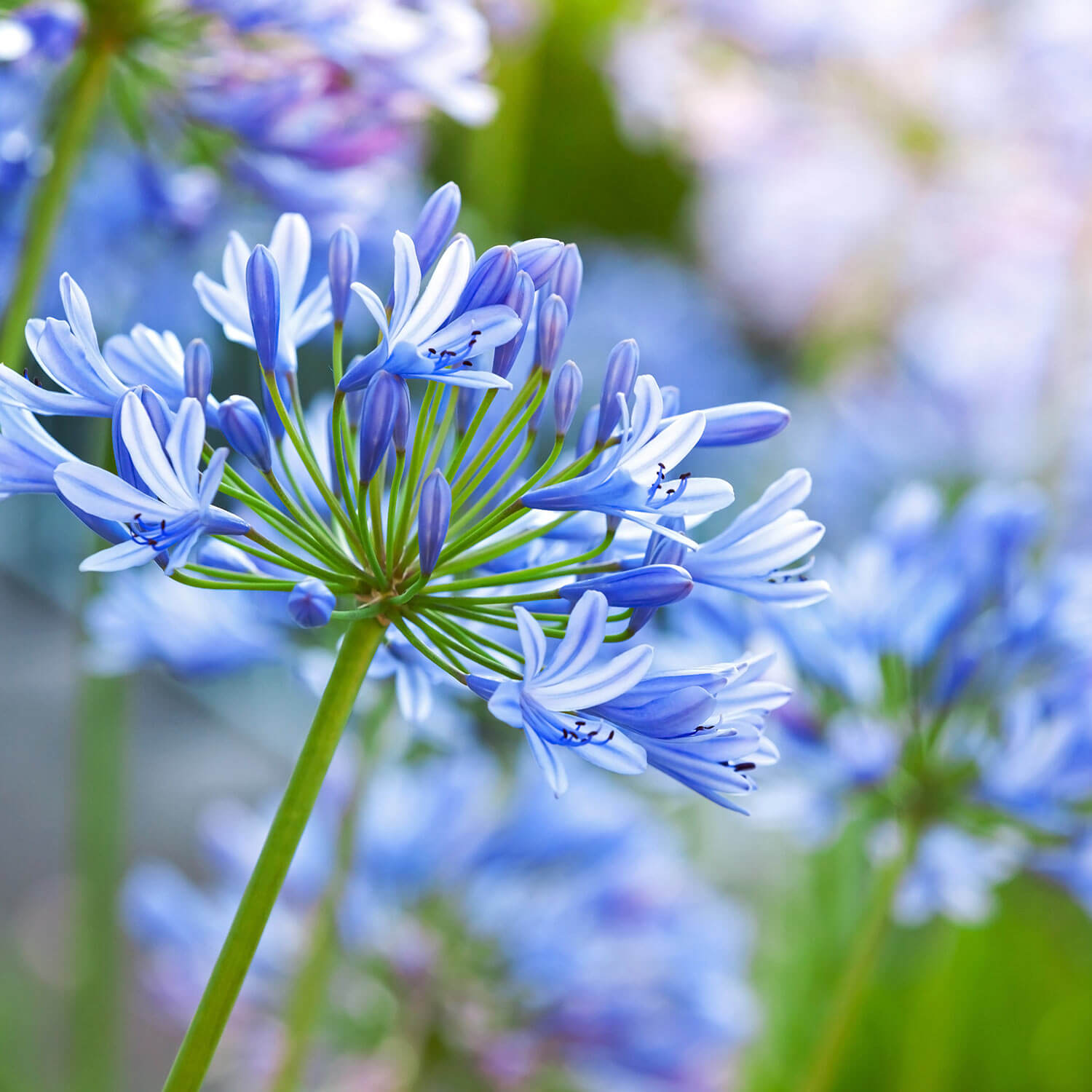Understanding the Art of Agapanthus Care: Vital Actions for Healthy Growth and Lively Blooms
In the realm of gardening, the growing of agapanthus stands as a satisfying endeavor for those who look for to support these stylish blooming plants. From picking the ideal range to mastering trimming techniques, the journey in the direction of growing flourishing agapanthus plants is diverse and holds the key to unlocking the complete potential of these herb treasures.

Picking the Right Agapanthus Variety

When selecting the appropriate Agapanthus range for your garden, consider factors such as environment viability, flower shade, and growth behavior. In addition, take into consideration the environment in your area to guarantee the Agapanthus variety you choose can flourish in your particular problems. Comprehending the development routine of different Agapanthus varieties is crucial for correct placement within your yard.
Suitable Growing Conditions
Thinking about the optimum environmental demands is vital for successful Agapanthus growing. Agapanthus plants are sensitive to cold temperature levels and need to be secured from frost during winter months.
To make sure healthy and balanced development and lively blossoms, plant Agapanthus bulbs at a depth of regarding 2-4 inches and space them 8-12 inches apart. Adding natural matter, such as compost, to the dirt can enhance water drainage and fertility, advertising durable origin advancement. Mulching around the base of the plants aids preserve wetness and subdues weed development. Regular watering is critical, especially during the growing period, to maintain the dirt continually damp but not waterlogged.
Watering and Feeding Tips
Preserving proper moisture degrees and supplying crucial nutrients are crucial elements in the care program for Agapanthus plants. It is crucial to strike a balance when it comes to sprinkling Agapanthus. If overwatered, these plants prefer regularly moist soil but are at risk to root rot. Throughout the growing season, water deeply as soon as a week, guaranteeing the dirt is well-draining to avoid waterlogging. In hotter environments or during periods of dry spell, even more frequent watering might be required to keep the soil uniformly wet. Nonetheless, decrease watering in the winter season to prevent water logged problems.
Feeding Agapanthus is crucial for advertising healthy development and prolific flowers. Apply a well balanced fertilizer, such as a 10-10-10 formula, in the early spring as brand-new development emerges. Repeat this application every 6-8 weeks throughout the expanding period. Stay clear of too much fertilization, click over here now as it can bring about lush foliage at the expenditure of blooms. Always comply with the maker's guidelines for correct dilution and application techniques. By complying with these watering and feeding pointers, you can guarantee your Agapanthus plants prosper and generate vivid, lasting flowers.
Trimming Strategies for Agapanthus
Trimming Agapanthus plants at the ideal times and with appropriate techniques is essential for maintaining their health and advertising ideal development and blooming. The optimal time to prune Agapanthus is in late winter or very early spring prior to new growth arises.
For flowered stems, wait up until the blooms have perished and after that cut them back to the base. This not only cleans the plant's look yet also urges the advancement of new blossom buds. Deadheading spent blossoms can also reroute the plant's energy right into creating even more flowers rather than setting seeds. Nevertheless, if you intend to gather seeds for proliferation, leave some flowers to fully grown and completely dry on the plant.
Keep in my sources mind to use tidy, sharp devices to make precise cuts and minimize the threat of introducing illness. Agapanthus. Routine pruning will aid maintain your Agapanthus looking healthy and balanced and cool while making sure a bountiful screen of stunning blossoms
Dealing With Typical Parasites and Illness
After guaranteeing correct trimming techniques for Agapanthus, it is vital to attend to typical parasites and conditions that can affect the hop over to here health and wellness and vitality of these plants. One common bug that influences Agapanthus is the Agapanthus gall midget.
An additional typical problem is fungal leaf spot, which presents as dark sores on the fallen leaves. To avoid fungal conditions, make sure good air flow around the plants, prevent overhead watering, and get rid of any type of contaminated leaves promptly. Furthermore, Agapanthus plants can deal with origin rot if they are grown in inadequately draining soil. To stop this, plant Agapanthus in well-draining soil and avoid overwatering. By being watchful and taking punctual activity against conditions and parasites, you can help your Agapanthus plants grow and produce vibrant blossoms.

Conclusion
Finally, mastering the art of agapanthus care involves selecting the best range, giving perfect planting conditions, correct watering and feeding, proper pruning strategies, and attending to typical parasites and conditions. By adhering to these important steps, you can guarantee healthy and balanced growth and dynamic blooms for your agapanthus plants. Remember to routinely keep track of and preserve your plants to promote their total health and long life.
To guarantee healthy and balanced growth and dynamic flowers, plant Agapanthus light bulbs at a deepness of regarding 2-4 inches and area them 8-12 inches apart. By following these watering and feeding pointers, you can guarantee your Agapanthus plants flourish and produce vivid, resilient flowers.
One typical pest that influences Agapanthus is the Agapanthus gall midget. In addition, Agapanthus plants can endure from origin rot if they are planted in inadequately draining pipes dirt. By adhering to these essential actions, you can make sure healthy development and vibrant blossoms for your agapanthus plants.